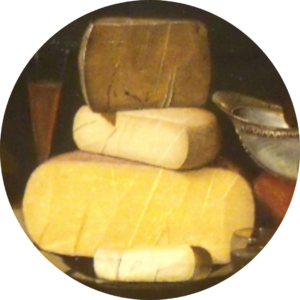Barbera d’Asti is an esteemed Italian red wine, deeply rooted in the history, culture, and viticulture of the Piedmont region in northwestern Italy. Its journey from a local staple to an internationally acclaimed wine reflects centuries of tradition, innovation, and passion for winemaking. This history encompasses the wine’s origins, development, the characteristics of its key grapes, its designated regions and appellations, and its status in the United States.
Origins and Historical Significance
- Ancient Beginnings: The origins of Barbera d’Asti trace back to the Middle Ages, with the first documented mention in the 17th century. However, the Barbera grape is believed to have been cultivated in the Piedmont region for several centuries prior.
- Rise to Prominence: Initially considered a wine for everyday consumption due to its abundance and affordability, Barbera d’Asti gained prominence in the 19th and 20th centuries as winemakers began to focus on quality over quantity. This shift was partly due to the phylloxera epidemic that devastated many European vineyards, leading to a reevaluation of viticultural practices.
Key Grape Characteristics
- Barbera Grape: The Barbera grape is the cornerstone of Barbera d’Asti wine. Known for its deep color, high acidity, and low tannins, it produces wines that are vibrant and fruit-forward, with flavors of cherries, blackberries, and plums. The grape’s high acidity makes it versatile, capable of producing both easy-drinking table wines and more structured, age-worthy varieties.
Important Regions, Appellations, and Crus
Piedmont Region
- Geographical Diversity: Piedmont, meaning “foot of the mountain,” is surrounded on three sides by the Alps. The region’s diverse terrain, including hills, valleys, and river confluences, contributes to the unique terroir of Barbera d’Asti wines.
Designated Appellations
- Barbera d’Asti DOCG: Recognized as a DOC (Denominazione di Origine Controllata) in 1970 and elevated to DOCG (Denominazione di Origine Controllata e Garantita) status in 2008, Barbera d’Asti DOCG is the primary appellation for Barbera in Piedmont. This designation ensures stringent quality standards, including specific vineyard practices, grape yields, and aging requirements.
- Subzones and Crus: Within the Barbera d’Asti DOCG, there are recognized subzones and specific vineyards (crus) known for producing wines of exceptional quality. These areas, such as Nizza, Tinella, and Colli Astiani, have more rigorous requirements and often produce wines with greater complexity and aging potential.
Wine Characteristics and Styles
- Versatility: Barbera d’Asti wines vary from light and fruity to rich and full-bodied, depending on the winemaking techniques used. The use of oak aging can impart additional flavors and complexity, including notes of vanilla, toast, and spice.
- Food Pairings: The wine’s natural acidity and fruity profile make it an excellent companion to a wide range of dishes, from pasta and pizza to meaty stews and aged cheeses.
Presence in the USA
- Growing Popularity: Barbera d’Asti has experienced growing popularity in the United States over the past few decades. American wine enthusiasts have embraced its versatility, affordability, and food-friendly nature.
- Importance in the Market: The U.S. is a significant market for Italian wines, including Barbera d’Asti. The increase in demand has led to greater visibility in wine shops, restaurants, and online retailers.
- Cultural Impact: Wine festivals, tastings, and educational events focusing on Italian varietals have contributed to the growing appreciation of Barbera d’Asti in the U.S. The wine is often highlighted for its ability to represent the rich viticultural heritage of Italy while offering variety and value to consumers.
Conclusion
Barbera d’Asti’s journey from a humble table wine to a celebrated DOCG exemplifies the evolution of Italian winemaking. Its adaptability across different styles, driven by the unique characteristics of the Barbera grape, its historical regions, and appellations, underscores the wine’s enduring appeal. As it continues to charm wine enthusiasts around the world, particularly in the United States, Barbera d’Asti stands as a testament to Italy’s rich viticultural legacy and the dynamic potential of its vineyards.
Below is a table that outlines the tasting notes for Barbera d’Asti wine, including the characteristics of the wine’s body, acidity, sweetness, tannins, and alcohol content. It also details the grape flavors typical of Barbera d’Asti, the impact of various flavoring techniques used in its production, and the flavors that arise from aging the wine.
| Characteristic | Description |
|---|---|
| Body | Medium to full-bodied, with the fullness often influenced by the winemaking techniques such as oak aging. |
| Acidity | High, which is a hallmark of the Barbera grape, contributing to the wine’s freshness and food-friendliness. |
| Sweetness | Dry, with the fruitiness of the grape often perceived as sweetness on the palate. |
| Tannins | Low to medium, with younger wines on the lower end and those aged in oak showing slightly higher tannin levels. |
| Alcohol | Moderate to high, typically around 13-14.5% ABV, influenced by the ripeness of the grapes and the winemaking style. |
| Grape Flavors | Dominant flavors include cherries, blackberries, and plums, often with notes of black cherry, spice, and sometimes a hint of anise. |
| Impact of Flavoring Techniques | – Oak Flavoring: Common, adding complexity with vanilla, toast, and spice notes. Not all Barbera d’Asti sees oak, aiming to preserve fruit purity in some styles. – Malolactic Conversion: Common, softening the acidity and adding creamy, buttery nuances. – Lees Aging: Less common, can add texture and subtle yeasty or bready notes. |
| Flavors Arising from Aging | With aging, Barbera d’Asti can develop tertiary flavors such as leather, dried fruits, and earthy notes. The fruitiness can evolve into more complex, savory characteristics. |
The diversity in Barbera d’Asti’s style is largely attributable to the winemaker’s choices in vineyard management, grape selection, and winemaking techniques. The wine can range from bright and juicy, emphasizing the purity of fruit, to more structured and complex, highlighting the impact of oak and the depth that comes with age. This versatility makes Barbera d’Asti a fascinating wine for both casual enjoyment and serious study.
Barbera d’Asti, with its vibrant acidity, moderate to low tannins, and fruit-forward profile, is an incredibly versatile wine for food pairing. This versatility allows it to complement a wide array of dishes, from simple pastas to complex meat preparations. The wine’s acidity makes it an excellent match for fatty and creamy dishes, as it cuts through the richness, while its fruity characteristics can complement both savory and slightly sweet flavors.
Food Pairing
- Local Dishes: In its home region of Piedmont, Barbera d’Asti pairs beautifully with traditional dishes such as agnolotti del plin (meat-stuffed pasta), risotto al tartufo (truffle risotto), and brasato al Barolo (beef braised in Barolo wine). These dishes benefit from the wine’s acidity, which balances the richness and complements the flavors.
- Meats: The wine’s characteristics make it a good match for a variety of meats, including beef, pork, lamb, and game. It can accompany everything from grilled meats to rich, slow-cooked stews.
- Vegetarian Dishes: Barbera d’Asti can also complement vegetarian dishes, especially those featuring tomatoes, mushrooms, eggplants, and root vegetables, as the wine’s acidity and fruitiness echo the natural flavors of these ingredients.
Cheese Pairing
When pairing Barbera d’Asti with cheese, both the intensity of the wine and the cheese should be considered to achieve balance. The wine pairs well with a range of cheeses, from soft and creamy to hard and aged varieties. Local Piedmont cheeses offer particularly harmonious matches:
- Toma Piemontese: A semi-soft, cow’s milk cheese with a nutty and sometimes grassy flavor that complements the fruity and acidic nature of Barbera d’Asti.
- Robiola: A soft, creamy cheese that can be made from cow’s, goat’s, or sheep’s milk. Its rich, buttery texture is beautifully cut through by the high acidity of the wine.
- Bra Tenero: A semi-hard cow’s milk cheese with a mild, slightly sweet flavor that pairs well with the medium body and fruity notes of Barbera d’Asti.
- Castelmagno: An aged, crumbly cheese with a strong, pungent flavor. It is an excellent match for more structured and aged Barbera d’Asti wines, where the wine’s complexity and the cheese’s intensity can complement each other.
Pairing Tips
- Match the intensity: Ensure the wine and food/cheese share similar intensity levels to avoid overpowering one or the other.
- Consider preparation: The preparation method of the dish can influence the pairing. For example, a dish with a tomato-based sauce will harmonize with the acidity of Barbera d’Asti.
- Aging potential: Older, more complex Barbera d’Asti wines can handle richer, more flavorful cheeses and dishes.
In summary, Barbera d’Asti’s high acidity and fruit-forward profile make it a flexible wine for pairing with a wide range of foods and cheeses, particularly those from its local Piedmont region. Experimenting with different pairings can reveal the wine’s ability to enhance and be enhanced by a variety of flavors and textures.
Barbera, one of Italy’s most planted grape varieties, finds its most distinguished expressions in the Piedmont region, particularly in Barbera d’Asti and Barbera d’Alba appellations. However, the grape is also grown in other Italian regions and internationally, where it adapts to local climates and winemaking styles, offering a spectrum of flavors and characteristics. Understanding how Barbera d’Asti varies from other interpretations requires exploring the influences of terroir, climate, and winemaking traditions in each area.
Barbera d’Asti vs. Barbera d’Alba
- Region and Terroir: Both wines are produced in Piedmont but in different zones. Barbera d’Asti is from the Asti province, characterized by rolling hills and diverse soil compositions, including limestone, clay, and sandy soils. Barbera d’Alba comes from the Alba area within the Langhe hills, known for its calcareous clay soils. The different terroirs contribute to subtle differences in the wines’ profiles.
- Taste Profile: Barbera d’Asti is often described as having brighter acidity and more pronounced fruit flavors, with a lighter body than its counterpart. Barbera d’Alba can present a slightly richer body with deeper color and, due to the terroir and winemaking practices, can sometimes offer more pronounced tannins and a slightly lower acidity, contributing to a fuller, rounder palate experience.
National Interpretations
- Barbera del Monferrato: Also produced in Piedmont, Barbera del Monferrato can be frizzante (slightly sparkling), which is rare for other Barbera wines. This style is lighter and more refreshing, with a focus on preserving the grape’s natural fruity and acidic characteristics.
- Other Italian Regions: Beyond Piedmont, Barbera is planted in Lombardy, Emilia-Romagna, and Sicily, but in smaller quantities. These wines tend to emphasize the fruit-forward nature of the grape but can vary significantly in acidity and body due to the warmer climates and different soil compositions, often resulting in a softer, more approachable style at a younger age.
International Interpretations
- United States: California and Washington State are known for producing Barbera, where the grape benefits from warmer climates. The American style of Barbera often features riper fruit flavors, higher alcohol content, and sometimes a more noticeable oak influence, giving the wines a richer texture and smoother tannins compared to their Italian counterparts.
- Australia and Argentina: Both countries have emerging Barbera plantings, with styles that tend to highlight the varietal’s fruitiness and adapt to the warmer growing conditions. Australian Barberas, particularly from regions like Victoria and South Australia, lean towards a fruit-driven, medium-bodied style with moderate acidity. In Argentina, the focus is also on the fruit, with a softer approach and often less acidity, reflecting the warmer growing conditions and different winemaking philosophies.
Conclusion
Barbera d’Asti’s taste profile is distinguished by its vibrant acidity, medium body, and pronounced cherry and berry flavors, a reflection of the specific terroir and climatic conditions of the Asti region. As Barbera adapts to different regions both in Italy and internationally, it expresses a range of styles influenced by local terroirs, climates, and winemaking traditions. From the fuller-bodied and sometimes more tannic expressions found in Barbera d’Alba to the riper, oak-influenced styles of California, each interpretation of Barbera showcases the versatility and adaptability of this beloved grape.


